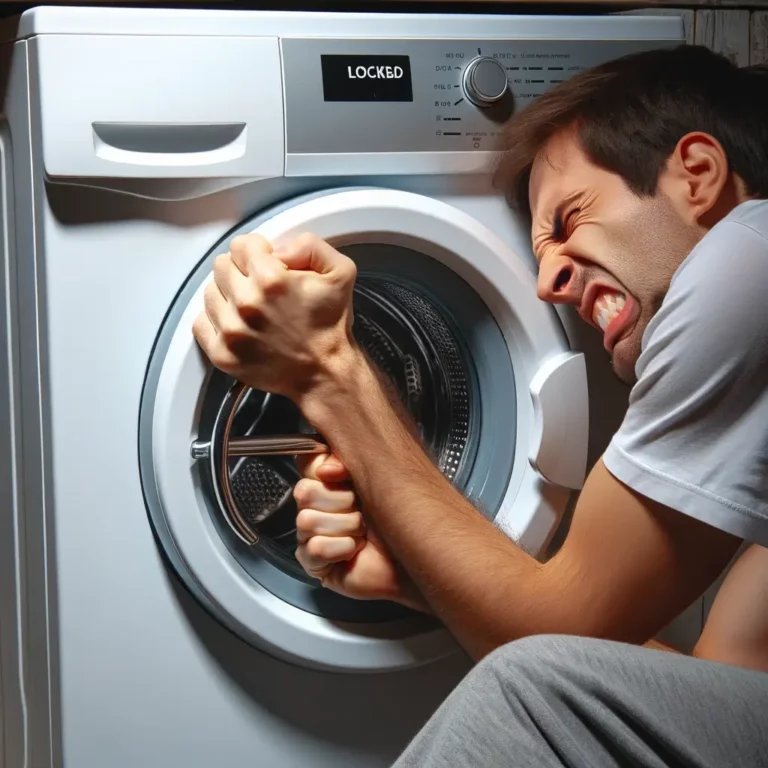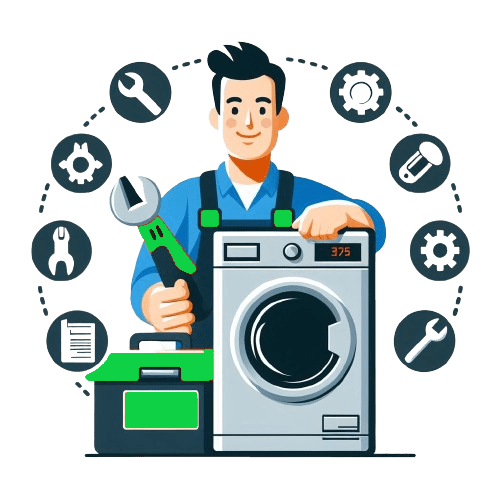Blog
I’ve been fixing appliances for a long time. A locked washing machine is a common problem I see. It happens for different reasons. It’s good to know the signs of a problem early.
Often, the washer gets locked with clothes inside, sometimes with water and wet clothes. This is frustrating. It stops your laundry and can ruin your clothes if they stay wet. Knowing why this happens helps to stop it before it gets worse.


Washing machines lock for safety. Imagine if the door popped open mid-cycle – water everywhere, right? Not good. So, they’re designed to stay shut while running. But when they stay locked after the cycle, that’s not part of the plan.
Spotting the Problem Here’s how I do it:
Initial Checks Before you panic, try these:
Understanding Washer Types Different washers have different quirks. Top-loaders and front-loaders, for instance, have different lock mechanisms. Knowing your type helps.
When It’s More Than Just a Lock Sometimes, a locked door is a symptom, not the problem. Like when there’s an issue with the water level sensor or the main control board. That’s when things get a bit more technical. When you need a reliable technician to fix your washer contact us.
Alright, you’ve figured out why your washer might be locked. Now, let’s roll up our sleeves and fix it. Here’s a step-by-step guide I’ve put together from my years of experience in appliance repair.
Step 1: Safety First Always unplug the machine before you start. Water and electricity are a dangerous mix. Safety goggles? Not a bad idea either.
Step 2: Check for Obstructions Sometimes, it’s a simple case of something stuck in the door. A sock, a small towel – you’d be surprised. Gently tug around the seal and see if there’s anything there.
Step 3: Power Reset Plug it back in after a minute or two. This can reset the machine’s system, sort of like rebooting a computer. Give it a try. Sometimes it’s all you need.
Step 4: Manual Release Many washers have a manual release. It’s often hidden, but your user manual will show you where. It’s usually a pull tab or a lever inside the machine, near the door lock. Be gentle with it.
Step 5: Drain Any Excess Water If there’s water that hasn’t drained, it might be keeping the door locked. Most machines have a drain filter you can access from the front. Put a towel down – it can get a bit wet.
Step 6: Check the Door Lock Mechanism If you’re comfortable, take a look at the lock mechanism. It might be jammed or broken. Replacing it might be needed.
Step 7: Inspect the Control Panel Sometimes the issue lies in the electronics. A loose wire or a faulty control board can cause locking issues. If you’re not sure, this might be where you call in a pro.
Step 8: Test Your Fixes Once you’ve done these checks and fixes, try running a short cycle. Keep an eye on it, see if the problem’s solved.
Remember, not every issue can be solved at home, and that’s okay. If you’ve gone through these steps and your washer is still locked, it might be time to call in an expert.
Now that you’ve tackled the locked door, let’s talk about preventing it from happening again. I’ve got some tips that’ll help keep your washing machine in top shape. Trust me, a little care goes a long way.
Regular Maintenance
Proper Usage
Routine Checks
Know Your Washer
When to Replace Parts
Awareness
Sometimes, despite our best efforts, a problem is just too complex for a DIY fix. That’s where professionals like us at ARNI Services come in. Here’s how to know when it’s time to pick up the phone and call in the experts.
Recognizing Complex Issues
Benefits of Professional Repair
Cost vs. DIY
ARNI Services: Your Trusted Partner


If you have concerns about your appliance’s performance, contact the professionals at ARNI Services, Appliance Repair, for a thorough diagnosis and repair service. – you can’t put a price tag on peace of mind.